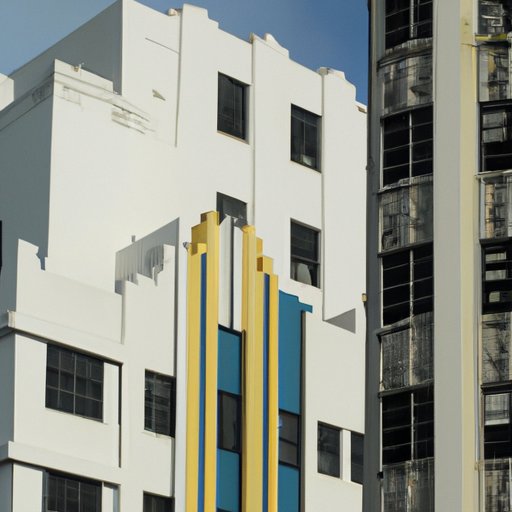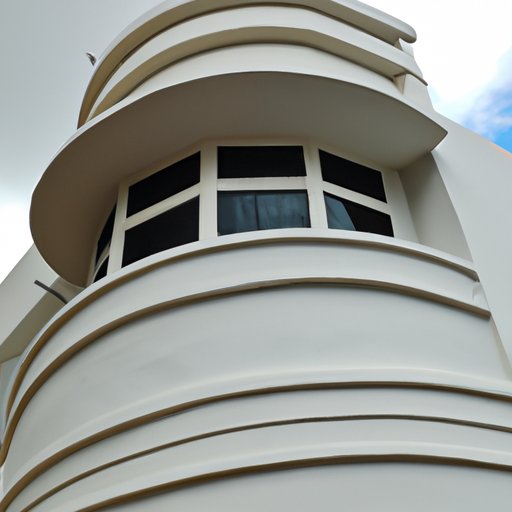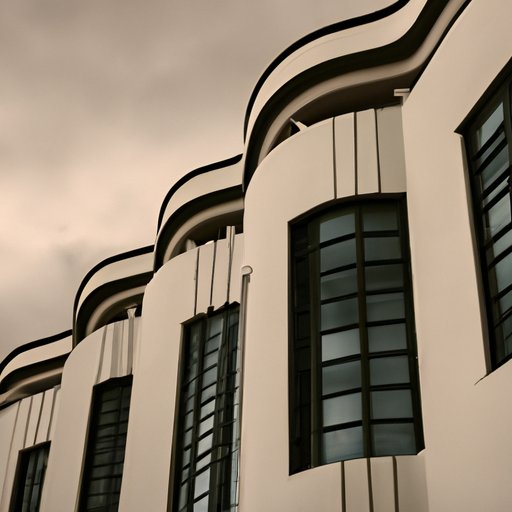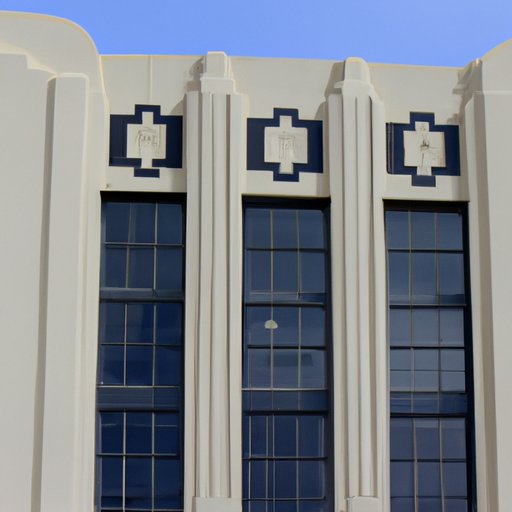
Overview of Art Deco Architecture
Art Deco architecture is a style of building design that emerged in the early 20th century. It was an international movement that combined traditional craftsmanship with modern materials and techniques. Characterized by bold geometric shapes and ornamentation, Art Deco architecture has had a lasting impact on the world’s cities.
Definition
Art Deco is a style of visual arts and architecture that originated in Europe in the 1920s and 1930s. The term “Art Deco” was coined in 1968, but it only began to gain widespread recognition in the 1970s. It is often associated with luxury and glamour, as well as advances in technology and industry. Art Deco is characterized by its use of bold colors, geometric shapes, and ornamental motifs. It is also known for its sleek lines and streamlined forms.
History
The origins of Art Deco are closely linked to the emergence of modernism in the early 20th century. It was a reaction against the traditional styles of the past and sought to embrace new materials and technologies. Art Deco gained popularity in the 1920s and 1930s, particularly in Europe and America. It was the dominant style of architecture in the period between the two World Wars. After World War II, it was gradually replaced by other styles such as modernism and postmodernism.

Origins and Influences of Art Deco Architecture
Art Deco architecture was influenced by many different movements, including Art Nouveau, Cubism, and Modernism. Art Nouveau was a popular style in the late 19th and early 20th centuries, characterized by its curved lines and floral motifs. Cubism was an avant-garde movement in painting and sculpture that emphasized the use of geometric shapes. Modernism, which emerged in the early 20th century, was a reaction against traditional styles and sought to create a more rational and functional approach to design.

Characteristics of Art Deco Architecture
The defining characteristics of Art Deco architecture are its use of geometric shapes, ornamental motifs, and bold colors. Buildings constructed in this style often feature stepped façades, terraced roofs, and strong vertical lines. Other common features include curved windows, sunbursts, chevrons, zigzags, and stylized figures. Art Deco buildings also often make use of bright colors, such as bright blues, greens, and yellows.
Famous Examples of Art Deco Architecture
Some of the most famous examples of Art Deco architecture can be found in New York City. The Chrysler Building, built in 1930, is one of the most iconic examples of the style. Its iconic spire, made of stainless steel and adorned with eagle heads, is instantly recognizable. Another famous example is the Empire State Building, completed in 1931. Its Art Deco elements include its stepped façade, terraced roof, and distinctive antennae.
The Waldorf Astoria hotel, located in midtown Manhattan, is another iconic example of Art Deco architecture. Built in 1931, it is characterized by its stepped façade and ornate decorations. The lobby of the hotel is especially notable for its grand marble staircase and elaborate ceiling mural.
Preservation of Art Deco Architecture
The preservation of Art Deco architecture is an ongoing effort. Historic preservation organizations have been instrumental in protecting and restoring these iconic structures. Governments have also enacted regulations to protect Art Deco buildings from demolition or alteration. Private individuals have also taken up the cause, raising funds for restoration projects and advocating for the protection of endangered buildings.
Impact of Art Deco Architecture on Modern Architecture
The influence of Art Deco architecture can still be seen in modern buildings. Its emphasis on simplicity, industrialization, and streamlining has been adopted by contemporary architects. Art Deco buildings are now viewed as symbols of progress and the optimism of the modern age.

Future of Art Deco Architecture
The future of Art Deco architecture looks bright. Many buildings are undergoing renovations to restore them to their original appearance. Others are being adapted for new uses, such as residential apartments or office space. There is also a growing trend of new construction in the Art Deco style, as architects seek to capture the essence of this iconic era.
(Note: Is this article not meeting your expectations? Do you have knowledge or insights to share? Unlock new opportunities and expand your reach by joining our authors team. Click Registration to join us and share your expertise with our readers.)
